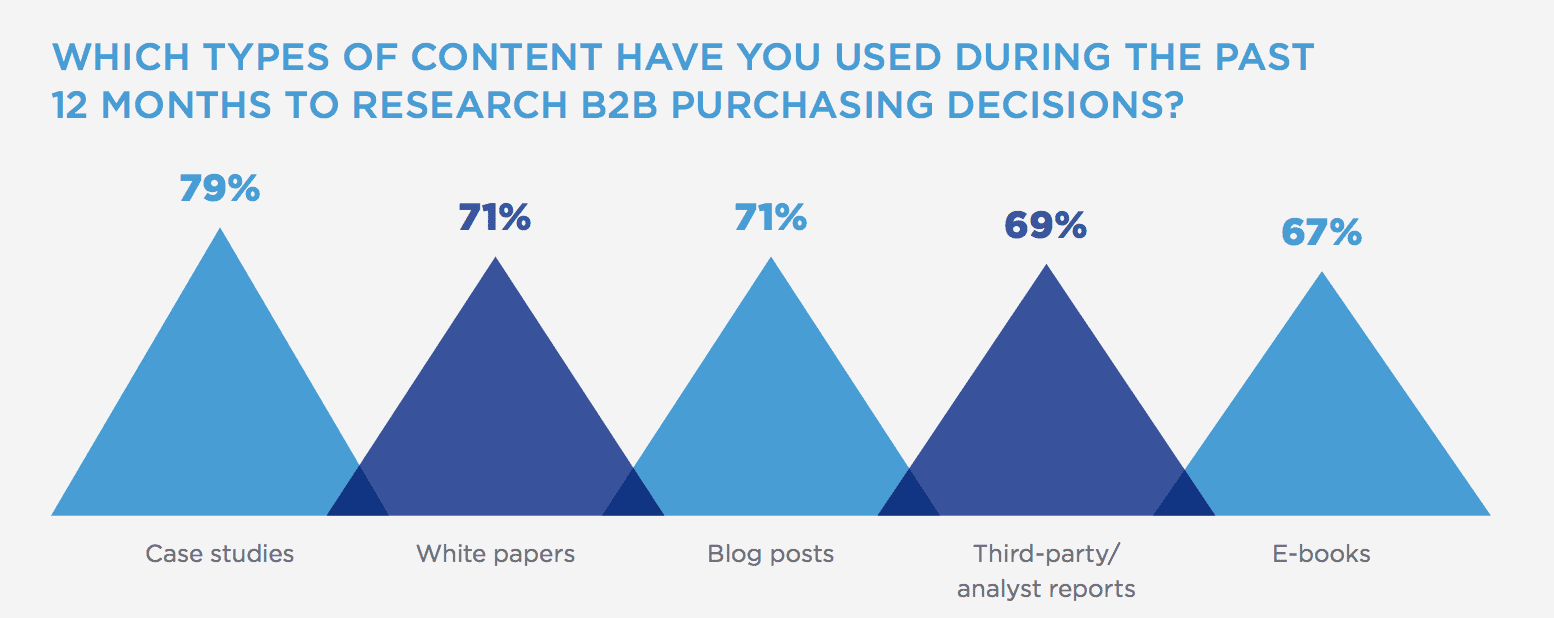Since Covid-19 arrived on the global scene, my schedule has looked something like this:
- Rise.
- Think about exercising.
- Eat.
- Do remote work.
- Take Zoom call.
- Do more remote work.
- Eat more.
- Check front porch for deliveries.
- Watch late night Netflix series.
- Doze off.
- Repeat.
You can probably relate. The last twelve months gave us, all, plenty of time to reflect on the work we do and how we fill our non-work hours.
For me, I decided to watch exciting stories i.e., movies and series, on the many platforms I pay for monthly and rarely use. I have college-age nieces and nephews, they all need my passwords (thus, destroying my algorithms). Somewhere between binging on Blackish episodes and getting acquainted with The Crown, I started writing case studies for GoWP. For the next few minutes of your valuable time, I’ll focus on 3 simple reasons you should be writing case studies for your digital agency. Fair warning: I will refer back to film and television intermittently.
If you’re already convinced case studies are valuable and came here looking for inspiration, visit GoWP’s Case Studies page.
All of this exposition is leading me to a very important question:
In addition to tending to your agency, are you spending time creating case studies that market your expert skills and share your customers’ success stories?
If not, you’re lacking an engaging, authentic marketing tool that sells your services without making you seem “salesy.”
Now, some of you may be pumping the brakes on this blog, or fumbling with your mouse seeking that back button reciting one of these common excuses to not write case studies:
- “I can’t write a case study. Writing was never my thing.”
- “Time. Who has time to focus on case studies?”
- “Case studies? Bah humbug. Who reads or cares about case studies?”
Here’s my clap back:
Well, you blog pooper, people do read case studies. And, by “people”, I mean your prospective clients.
You are correct though; we live in a skim-it culture. Your English teacher’s warnings of the dangers of Cliff’s Notes or skimming readings are tossed aside in today’s read-time estimating, digital world. So yeah, you can’t count on people reading entire case studies, but they do skim the heck out of them. You probably missed that last sentence because you’re skimming this blog too.
So, let’s get to the good stuff, shall we? Case studies are worth your time and effort. Let’s dig into three reasons you should be writing them for your agency.
1. Case studies give your prospective clients the power to discover your solutions themselves
Case studies let your prospects maintain some control over their time and the amount of research they’ll invest in a new service or product they believe, or hope, will solve a challenge they face.
They’re in control and considering their options from a low-stress, comfortable distance. A prospect can read the case study and see herself in the place of the primary character – your existing client, the case study’s protagonist.
Why all of the English Lit. terminology?
Because while you can toss off your former teacher’s stance on Cliff’s Notes, you shouldn’t forget what he taught you about the elements of good storytelling. And, that’s all case studies really are – professional narratives that really jive with a prospective client. Prospects relate to the challenge of your case study’s protagonist and they hope to also achieve their positive results.
Prospects journey vicariously toward a neatly wrapped solution only your services can adeptly provide. And, they experience all of this without ever scheduling a discovery call or investing a dime.
Think I’m bluffing?
Cabo Press Founder Chris Lema says, “Most people don’t buy your products or services from scratch. It’s not even after seeing a great or funny commercial or ad. Nope. What happens is that a person has to get comfortable with you. They have to appreciate you. They have to value what you bring to the table. In essence, in order to spend money with you, they have to trust you.”
In what better medium can you display how you think and work than with a case study? What better way to build trust than to share a true story of a protagonist who faces a costly challenge and searches for salvation? No 30-second ad can do that.
Have you ever watched a movie or tv show and just sunk deeply into your chair because you’re that engrossed in the story you’re experiencing (not just watching) along with the character?
(Warning! Skip to reason #2 if you hate 80’s movies and all that is right with the world.)
For me, that chair-sinking experience happened with the film, Pretty in Pink. It’s a familiar story:
Girl (Andie) wants a prom date. She has no prospects. Then, the cutest boy in school, Blaine, (Yes. Blaine. It’s a John Hughes flick. Focus.) asks her to the prom, on a clunky TS-803, no less.
Enter the evil, spoiled villain (Blaine’s best friend, Steff) who cannot stand human joy and ruined it all for Andie rendering her without a prom date and nearly destroyed.
Fast Forward.
She tries to regain Blaine’s favor and fails. Multiple times.
She seeks to overcome frustration by enlisting the help of her friends, Ducky and Iona, who loan clothes and platitudes that create the magical night Andie so desired—sans Blaine.
They teach her lessons of self-determination far more valuable than any date with Mr. Blazer O’Khaki-Pants could ever impart.
Fast forward again.
On prom night, Blaine realizes a greater truth: Steff is the ultimate killjoy.
He makes a soulful about-face, apologizes to Andie, 80’s music soars, rain comes down, he and Andie kiss voluptuously outside of the event hall discovering budding young love and unity as their hair and prom outfits are soaked and credits roll.
Exhale.
Now, wasn’t that fun?
For pre-teen me, Blaine wasn’t just kissing Andie, he was kissing all of us who developed a crush on him, lost faith in him, but wanted to believe he wasn’t a toad. Andie prevailed while we watched! We became her trusted ally. Had she asked us to buy Stridex or Duran Duran albums, we would have done so.
Her vulnerable search for prom love was relatable and I trusted her for it. Heck, I loved her for it.
What about your clients?
It might be a silly comparison, but it’s what prospective clients experience to some degree. Many companies claim to have the quick fix, without truly understanding our heartaches and disappointments. They offer no proof, authority, or metrics to back up their solutions.
When we get to travel along the same path with someone who knows the battles we’ve waged with SEO, digital marketing, or even love, we become their champion, root for them, and trust the remedy they discovered. We can imagine trying the same process ourselves without ever being asked to.
That’s the powerful authenticity your agency earns with a good case study.
Okay, so maybe sappy 80’s love stories don’t do it for you. Your world is data. Keep reading, I’ve got something for you.
2. Case studies generate leads
The odds are actually in your favor. If someone takes the time to read your case study, it indicates they’re shopping for solutions. They’re interested and just looking for a reason, a good sign, to lean in and learn more about your company and methods.
You’re investing in putting together the right case study. They are also investing in finding “the one” and getting it right the first time.
Demand Gen’s 2020 Content Preference Survey Report shows 73% of those asked consume 3-7 items of content before speaking with a salesperson. Nobody wants to play the vendor field. They want a credible option and want to be “completed” by YOU. Your perfect skills and solutions. Jerry McGuire anybody?
They hope that by adding you to their team, together you’ll make the “kwan” — the coin. (See the movie if you don’t catch that reference.)
In his blog Why You Need to Write Case Studies (A Data-Driven Answer), top marketer and author, Neil Patel writes, “Client case studies are the most popular self-promotional content marketing tactic used by US marketing agency executives.” In the same paragraph, he quotes an eMarketer survey that found, “62.6% of survey respondents believe case studies are effective in generating leads.”
Every report or survey I’ve come across in the last few weeks ranks case studies as one of the leading marketing tools that persuades business owners.
Demand Gen’s research also shows:
But how does a case study generate leads?
In any number of ways, here are a couple implementation ideas:
- Creating a marketing funnel for each case study
Tempt website visitors with a testimonial that catches their attention and then offer the full case study as a free download. Asking the right questions on the form and putting the captured email address into a nurture sequence with the goal of scheduling a call or buying your service. - Using the right CTAs
Make sure you’ve got the right CTA for your audience. Sign up to your newsletter? Download a free resource? Schedule a no-strings-attached discover call? Discover more case studies that speak to their struggle? Whatever it is, the end-goal should be to ultimately capture their contact information so you can continue the conversation once they’ve finished reading.
3. Case studies are the perfect platform to showcase what you do best
Great film directors like Martin Scorcese, Ava Duvernay, and Bong Joon-ho are not award-winners simply because they choose to work on remarkable scripts. They’re timeless, impactful directors because they understand that, unlike live performance, film is the director’s medium. They have the complete power and discretion to tell a story by guiding the audience’s eyes to exactly where they want the focus.
They control the narrative. They get the viewers, from Point A (Problem) to Point B (Resolution). They even influence how we feel about the steps in between and the ultimate solution.
That same power rests with you, Skywalker. You possess the expert skill and ability. The case studies you create are your medium. They allow you to guide a prospect to the results and anecdotes you want to impart. Your case studies give you the floor to demonstrate why your solutions work and accurately depict how you’re able to deliver them.
They allow you to repurpose content to appeal to different audiences as you see fit. And, case studies provide you with the CTAs you desire your prospects to take.
Case studies are pretty cool when you consider how versatile they are. This list is in no way exhaustive and if you take anything away it should be that case studies are valuable and so very effective. And now you know that your prospective clients actually expect them. So, don’t disappoint them. They’re waiting, but not forever.
It’s all up to you.
Action!








